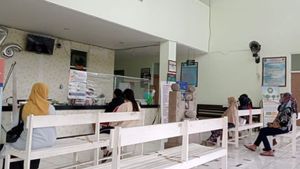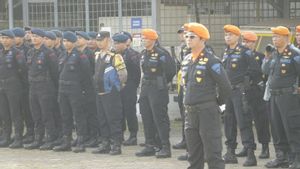This June, Jakarta celebrates its 495th birthday. In plain view, Jakarta as a megapolitan city is not inferior to other big cities in the world. Skyscraper buildings, modern modes of transportation, sports centers including the Jakarta International Stadium (JIS) which the Governor of DKI Jakarta Anies Baswedan is proud of and residents who look busy.
As the nation's capital, Jakarta is the center of government and economy. As many media published, Jakarta contributes to 70 percent of the national money circulation. In 2020, according to the DKI Jakarta Central Statistics Agency, the population of Jakarta reached 10,562,088 people with the number of vehicles reaching 20,221,821. Meanwhile, the area of DKI Jakarta is 664.01 square kilometers. With so many residents and the number of vehicles, it is not surprising that Jakarta is known for its traffic jams.
This year, on its 495th anniversary, Jakarta as the capital city still cannot be separated from the problems of traffic jams and floods. The provincial government's programs to prevent flooding, such as building and rehabilitating polders, reservoirs and rivers, have not seen significant flood prevention. Likewise, programs to prevent congestion such as building public transportation and encouraging residents to use it. Including the construction of flyovers and the implementation of odd-even. It helps but also not significant..
The irony is that ahead of the 495th Anniversary, Jakarta actually received a special gift. Jakarta's air quality is the worst. Air quality data agency IQ Air in mid-June 2022 put Jakarta's air quality in the first position as the city with the worst quality.
Air quality in Jakarta has reached an index of 160 according to the air quality data agency, IQ Air. Meanwhile, the air quality index based on United States standards (US AQ) classifies an index of 151 to 200 as an unhealthy air category.
The concentration of "particulate matter" (PM) 2.5 is 14.6 times higher than the World Health Organization (WHO) standard.
It should be noted that PM 2.5 is the smallest air pollutant and is harmful to the health of the body. Can cause respiratory tract infections and lung disorders in the long term. If it penetrates the circulatory network and is carried by the blood throughout, it can cause cardiovascular disorders such as coronary heart disease, said the Acting Deputy for Climatology of BMKG Urip Haryoko in a written statement to the media.
According to the BMKG analysis, the unhealthy air in Jakarta is influenced by various emission sources, both from local sources, such as transportation and residential areas, as well as from regional sources from industrial areas close to Jakarta.
The DKI Jakarta Provincial Government itself is not without making efforts. The Governor of DKI Jakarta has even initiated the Jakarta Langit Biru program as an effort to improve air quality. This program is stated in the DKI Governor's Instruction Number 66 of 2019 concerning Air Quality Control. They also do not hesitate to impose sanctions on companies that do pollution. However, these policies have not been fully successful.
Anies Baswedan himself views that the source of air pollution in Jakarta does not only come from the capital area itself, but also in the buffer zone. Likewise, air pollution in Jakarta will also spread to outside areas.
Indeed, fixing Jakarta cannot only be done by the provincial government of DKI Jakarta. Must involve satellite cities around Jakarta. Jabodetabek or Jakarta, Bogor, Tangerang and Bekasi must be integrated.
However, whatever the reason, the DKI Provincial Government has to find the right formulation so that the air quality in Jakarta will improve. Restrictions on odd-even vehicles, in addition to reducing congestion, are also to reduce air pollution. Including the governor's regulation issued. But it seems that is not enough.
Maybe the public still remembers, when the COVID-19 pandemic was at its worst and restrictions were strictly enforced, the air in Jakarta suddenly brightened.
Perhaps one thing that needs to be considered is how the DKI Jakarta Provincial Government's steps to reduce private vehicles succeed in forcing people to use public transportation. If you want to go to extremes, if now the odd-even restriction is only for 26 road sections, maybe it can be expanded. The issue of motor vehicle emissions is strictly enforced. Because one of the major sources of pollution comes from motor vehicle fumes. And no less important is to increase the lungs of the city. Green open space must be added.
Quoting from the jakarta.go.id website, DKI Jakarta has a protected forest area of 44.76 hectares in the form of brackish/mangrove forest, 227.34 hectares of conservation forest and the Thousand Islands National Park covering an area of 108,039.50 hectares, as well as an urban forest of 181 hectares. 28 hectares spread over 69 locations as of 2015.
With the APBD budget reaching more than Rp. 82 trillion, it is not difficult for the DKI Provincial Government to add urban forests.
Urban forests are not only the lungs of the city but also function as green open spaces. A place for people to interact. A place for people to gather, exercise and recreation. Like Anies Baswedan's slogan during the gubernatorial election campaign, Forward the City, Happy for the Citizens.
The English, Chinese, Japanese, Arabic, and French versions are automatically generated by the AI. So there may still be inaccuracies in translating, please always see Indonesian as our main language. (system supported by DigitalSiber.id)









